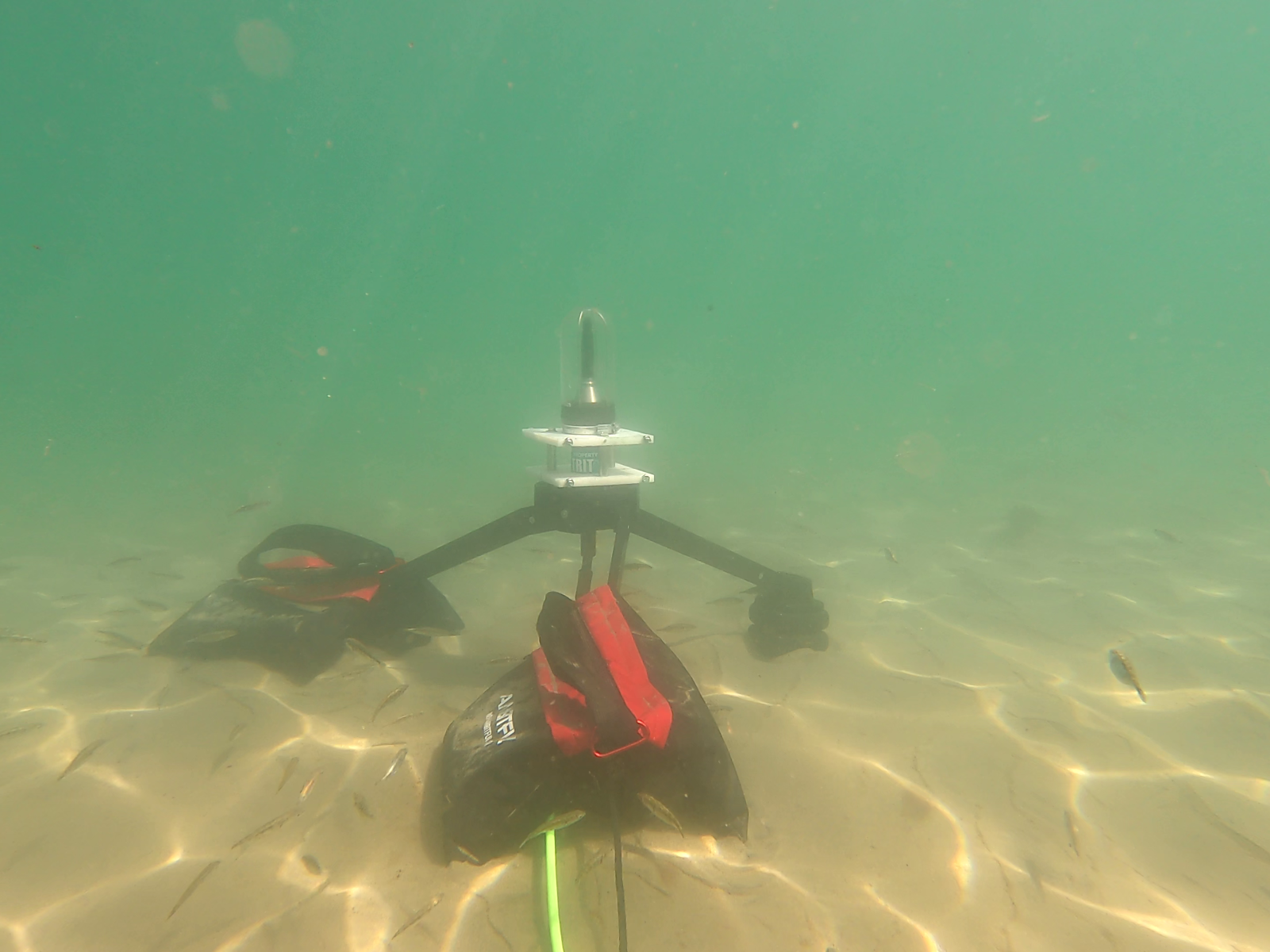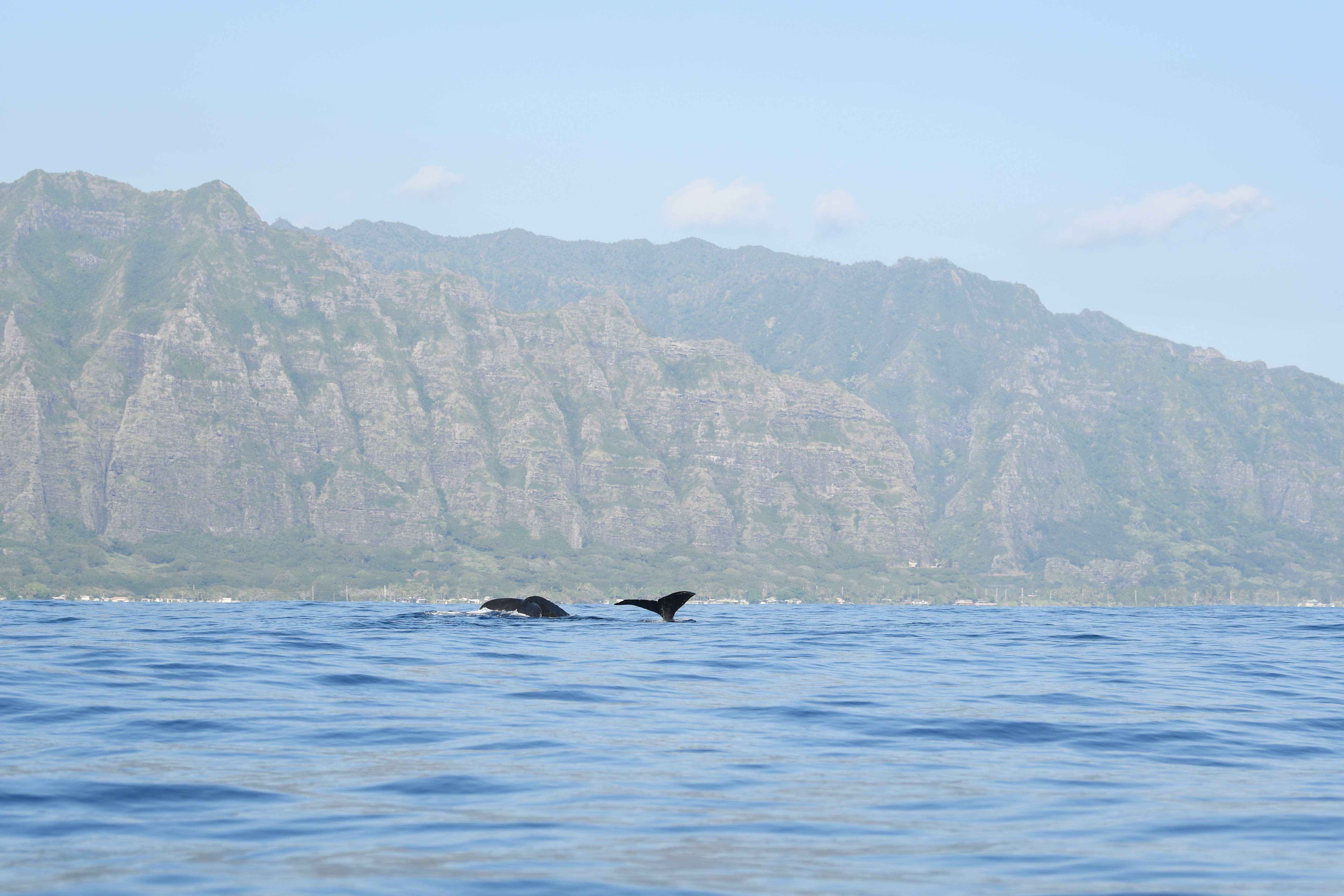Nereus Project
Nereus Project
Collecting monitoring data for marine energy

Nereus deployed a hydrophone to measure underwater sound near a riverine current energy converter.
Photo by Joe Haxel | PNNL
Nereus Project
Collecting monitoring data for marine energy

Nereus deployed a hydrophone to measure underwater sound near a riverine current energy converter.
Photo by Joe Haxel | PNNL
The advancement of the marine energy industry from design innovation to deployment of commercially ready devices is both promising and challenging. Additionally, tapping into the resources available in different environments—including offshore, tidal, and riverine—means that there is no one-size-fits-all solution to the technologies and their use at different scales. Regulatory stakeholders and communities are concerned about the potential effects of introducing novel devices into marine habitats. Consequently, developers face complex permitting processes and rigorous monitoring requirements to ensure these technologies do not negatively affect marine animals and ecosystems. However, the lack of comprehensive monitoring data around devices in the United States has hindered efforts to address these concerns. Sponsored by the Department of Energy Water Power Technologies Office, the Nereus Project aims to reduce these barriers by filling data gaps through empirical observations and measurements around deployed devices, ultimately facilitating marine energy permitting and testing.

The main goal of Nereus is to collect and analyze comprehensive monitoring data around operational marine energy sites and devices in the United States. Nereus aims to:
Nereus builds on insights from PNNL’s Ocean Energy Systems - Environmental (OES-E) and the Triton Initiative. OES-E conducts collaborative outreach and synthesizes information and scientific research on a global scale about marine energy and its potential impacts through its State of the Science reports, workshops, and the Tethys Knowledge Base. Triton has advanced the development, testing, and validation of monitoring technologies and methodologies for critical stressor-receptor interactions such as underwater noise, collision risk, and habitat changes through its Triton Field Trials. These combined efforts have informed Nereus’ strategy, contributing consistent and reliable data collection and analysis to address high-priority regulatory concerns.
Nereus comprises a team of researchers at PNNL with multidisciplinary expertise around environmental effects of marine energy and the permitting process. This team of oceanographers, biologists, ecologists, ocean engineers, and modelers works with developers, research institutions, regulatory agencies, test centers, and other stakeholders to identify monitoring priorities and data gaps for each marine energy site.

During field efforts, researchers collect a variety of data to address site-specific needs. For example, they use passive acoustic methods to measure underwater noise and characterize sounds from riverine turbines according to international standards. The team also uses sonar to monitor fish behavior around the device to assess collision risk. These measurements are taken at different times of day, under various conditions, and with different technological configurations to gain a comprehensive understanding of the effects being monitored.
The collected data not only provide critical information to support industry decision-making but also advances scientific understanding of the potential effects of marine energy devices across multiple technology types and ecological settings.
